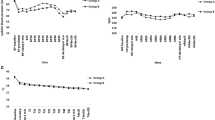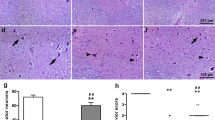Summary.
Dynorphin is a neuropeptide that is present in high quantities in the dorsal horn of the spinal cord. The peptide is actively involved in pain processing pathways. However, its involvement in spinal cord injury is not well known. Alteration in dynorphin immunoreactivity occurs following a focal trauma to the rat spinal cord. Infusion of dynorphin into the intrathecal space of the cord results in ischemia, cell damage and abnormal motor function. Antibodies to dynorphin when injected into the intrathecal space of the spinal cord following trauma improve motor recovery, reduce edema and cell changes. However, influence of dynorphin on trauma induced alteration in spinal cord bioelectrical activity is still not known. Spinal cord evoked potentials (SCEP) are good indicator of spinal cord pathology following trauma. Therefore, in present investigation, influence of dynorphin antibodies on trauma induced changes in SCEP were examined in our rat model. In addition, spinal cord edema formation, microvascular permeability disturbances and cell injury were also investigated. Our results show that topical application of dynorphin antiserum (1 : 200) two min before injury markedly attenuated the SCEP changes immediately after injury. In the antiserum treated animals, a significant reduction in the microvascular permeability, edema formation and cell injury was observed in the traumatised spinal cord. These observations suggest that (i) dynorphin is involved in the altered bioelectrical activity of the spinal cord following trauma, (ii) the peptide actively participates in the pathophysiological processes of cell injury in the spinal cord trauma, and (iii) the dynorphin antiserum has potential therapeutic value for the treatment of spinal cord injuries.
Similar content being viewed by others
Author information
Authors and Affiliations
Additional information
Received July 3, 2001 Accepted August 6, 2001 Published online July 31, 2002
Rights and permissions
About this article
Cite this article
Winkler, T., Sharma, H., Gordh, T. et al. Topical application of dynorphin A (1–17) antiserum attenuates trauma induced alterations in spinal cord evoked potentials, microvascular permeability disturbances, edema formation and cell injury . Amino Acids 23, 273–281 (2002). https://doi.org/10.1007/s00726-001-0138-y
Issue Date:
DOI: https://doi.org/10.1007/s00726-001-0138-y




